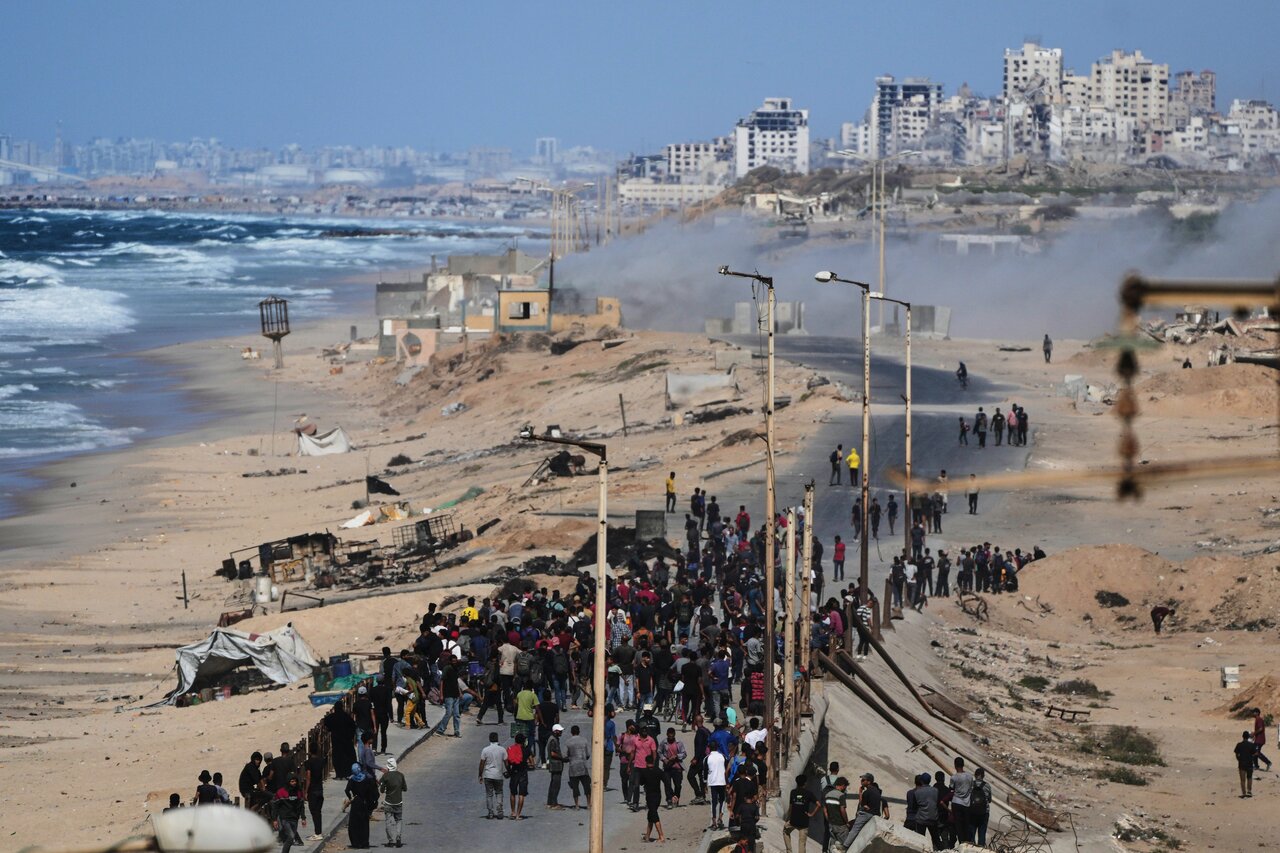Gaza truce’s fault lines: Disarmament, sovereignty, and power

TEHRAN – As tens of thousands of Palestinians returned to northern Gaza on Friday, the fragile relief of the ceasefire was burdened by political ultimatums—a reminder that even a pause in violence cannot erase the deeper struggle over power and sovereignty.
Israeli Prime Minister Benjamin Netanyahu hailed the truce but framed it as conditional. He announced “Hamas will be disarmed” and warned that if that cannot be achieved “the easy way,” Israel will pursue it “the hard way.”
Those words make the pause less an opening toward justice than a tactic to extract political concessions from a devastated population.
Hamas and allied factions responded firmly. The movement's officials have welcomed international aid but explicitly rejected any foreign “guardianship” that would supplant Palestinian authority. A senior Hamas official declared that disarmament under President Donald Trump's plan is “out of the question,” emphasizing that the proposed weapons handover is “non-negotiable.”
The Palestinian group insists that disarmament cannot be divorced from lifting the blockade and restoring political rights. This position reframes the ceasefire as a contest over sovereignty and legitimacy as much as over immediate security.
But while the rhetoric exposes the deep divisions, the ceasefire’s durability will hinge on a few critical flashpoints. Three immediate fault lines threaten to unpick the truce.
First, prisoner exchanges: Israel’s initial list of roughly 250 detainees slated for release omitted Palestinian leaders such as Marwan Barghouti, a move that has provoked public outrage and risks undermining the swap’s legitimacy.
Second, security control: the Israeli military has only partly withdrawn and retains positions that permit enduring oversight of corridors and crossings, showing how partial pullbacks can preserve strategic dominance even during a formal pause.
Third, the same senior Israeli officials responsible for two years of devastating bombardment and what international observers have labeled genocidal tactics remain firmly in charge, repeating the same threats and rhetoric.
Their calls for mass displacement and control over Gaza’s future have reinforced Palestinian distrust, signaling that reconstruction could again be used as a tool for coercion and demographic manipulation rather than genuine recovery.
The humanitarian ledger sharpens every political question. Independent tallies and Gaza health authorities place Palestinian deaths at more than 67,000 and record extensive destruction of homes, hospitals, and farmland; returnees confront rubble, unexploded ordnance, and collapsed services.
As far as what comes next, three scenarios now shape expectations. The first and most probable is fragile stasis: phased captive-prisoner exchanges and constrained aid produce months of uneasy calm while Israel maintains decisive security leverage and Palestinian political grievances calcify.
The second is a monitored pause: donors mobilize funds to clear rubble and restore infrastructure, but international trusteeships and technocratic boards effectively sideline Palestinian governance.
The third, and most dangerous, scenario is rapid collapse: a deadlock over disarmament or high-profile prisoners could give Israel an excuse to resume large-scale attacks.
Israeli forces could rearm and escalate under the guise of “security threats,” as Netanyahu’s far-right coalition leans on hawkish policies to survive, the prime minister faces potential prison if removed, and segments of the political establishment and public demand accountability for the October 7 operation.
History warns of the risk: during the first ceasefire under Trump, Hamas honored its commitment to release captives, yet Israel broke its pledges and launched renewed strikes, showing how quickly calm can give way to aggression.
Turning a pause into a durable peace requires choices the current arrangement has left unresolved. Therefore, the ceasefire risks becoming an interlude that spares lives in the short term while preserving the political architecture that produced the violence.
Leave a Comment